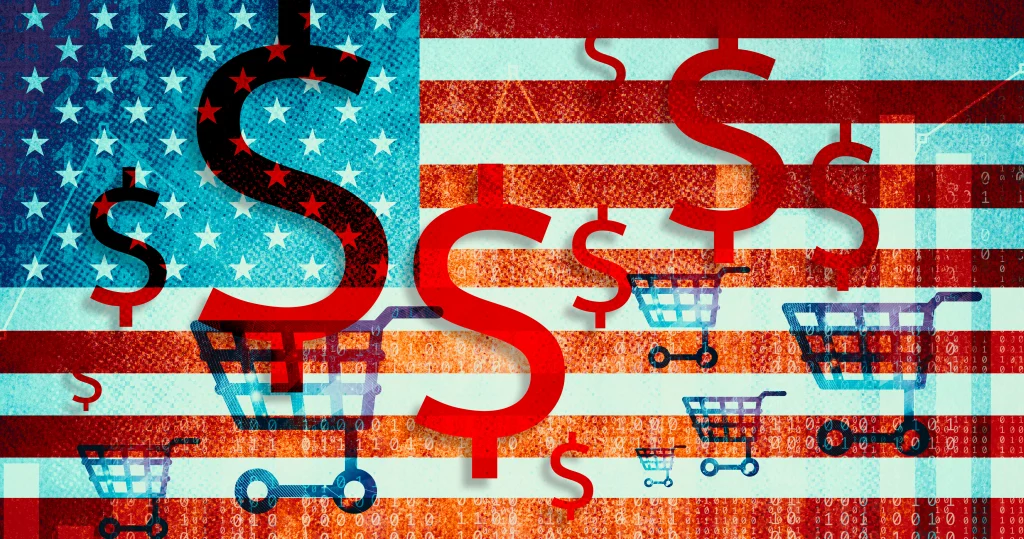Americans are already feeling the pinch at the grocery store. Prices for staples like beef and eggs have soared. Now, new tariffs could make things worse. Economists say that costs might rise even more if President Trump moves ahead with tariffs on Canada and Mexico.
During his campaign, Trump promised to lower costs for everyday Americans. However, the reality of tariff-related price hikes might go against that pledge. With a strong dependence on imported food, U.S. households could see an increase in their grocery bills.
Rising Beef Prices
The U.S. has relied heavily on cattle imports from Mexico and Canada. But recent interruptions could spell trouble. Tariffs or trade issues might affect everything from ground beef to steaks. Experts warn that this could lead to significant price hikes for consumers across the country.
Bob Chudy, a beef import consultant, mentions that uncertainty over tariffs is causing a rush for American meat buyers. They’re hurrying to secure supplies before February. If the tariffs come into effect as threatened, beef prices in the U.S. are likely to skyrocket.
Dependence on Imported Produce
The U.S. leans on its neighbors for fresh produce, especially during winter. Nearly 40% of fruits and vegetables in stores come from Canada and Mexico. Tariffs on these could ignite inflation, impacting household budgets.
Rob Fox, an economist, notes, “We import most of our fresh fruit and vegetables from Mexico and Canada so you will definitely see inflation on those products.” These items can’t easily be substituted.
Food Companies Scramble
With tariffs looming, food companies are racing against time.
They’re devising backup plans for sourcing products post-tariff. But this involves higher operational costs, which could get passed to consumers.
David Ortega of Michigan State University warns that even the threat of tariffs leads to price inflation. Companies are anxious about supply chain disruptions.
Impact on Daily Expenditures
With new tariffs, U.S. households could feel the impact on shopping bills. Beef and vegetable prices might spiral upwards, making essentials more expensive for everyone.
Lance Zimmerman, an analyst, highlights that domestic cattle reductions have already lifted beef prices. Tariffs would further complicate the situation.
Global Trade Relations
The tariff talk highlights America’s trade dependence. In 2023, $195.9 billion of agricultural goods were imported into the U.S., with Canada and Mexico being chief suppliers.
About 44% comes from these neighbors. With such strong ties, tariff disruptions could ripple across the market.
Challenging Situation for Retailers
Retailers are feeling the heat. It’s not just a consumer issue.
Store chains face dilemmas on how to manage rising supplier costs without losing customers.
The National Grocers Association labels tariffs as a “food tax,” cautioning there’s no easy fix. Any tariff burden eventually trickles down to shoppers.
Avocado Supply in Jeopardy
Avocados are a staple for many and face risk, too. Last December, the U.S. got over 50 million pounds of avocados weekly from Mexico.
Ahead of major events like the Super Bowl, demand can surge past 70 million pounds. Tariffs could jolt this supply chain, raising costs.
Alvaro Luque, from Avocados from Mexico, highlights the demand spike with looming tariff fears.
Wider Economic Impacts
While food is directly affected, the broader economy could feel the strain.
Higher grocery bills cut into disposable income, impacting other sectors.
Analysts argue that this could slow economic growth, especially if consumers tighten their belts further.
Seeking Solutions
The situation demands creative approaches. From looking at new suppliers to renegotiating with current partners, companies are exploring options.
The U.S. government faces challenges in balancing trade policies with consumer protection.
Many hope for solutions that won’t leave grocery shoppers paying the price.
While the intention was to bring costs down, Trump’s tariffs seem poised to do the opposite. Prices on everyday items like beef and produce could likely increase, affecting wallets everywhere. The hope is for a solution that maintains trade benefits without burdening consumers further.





